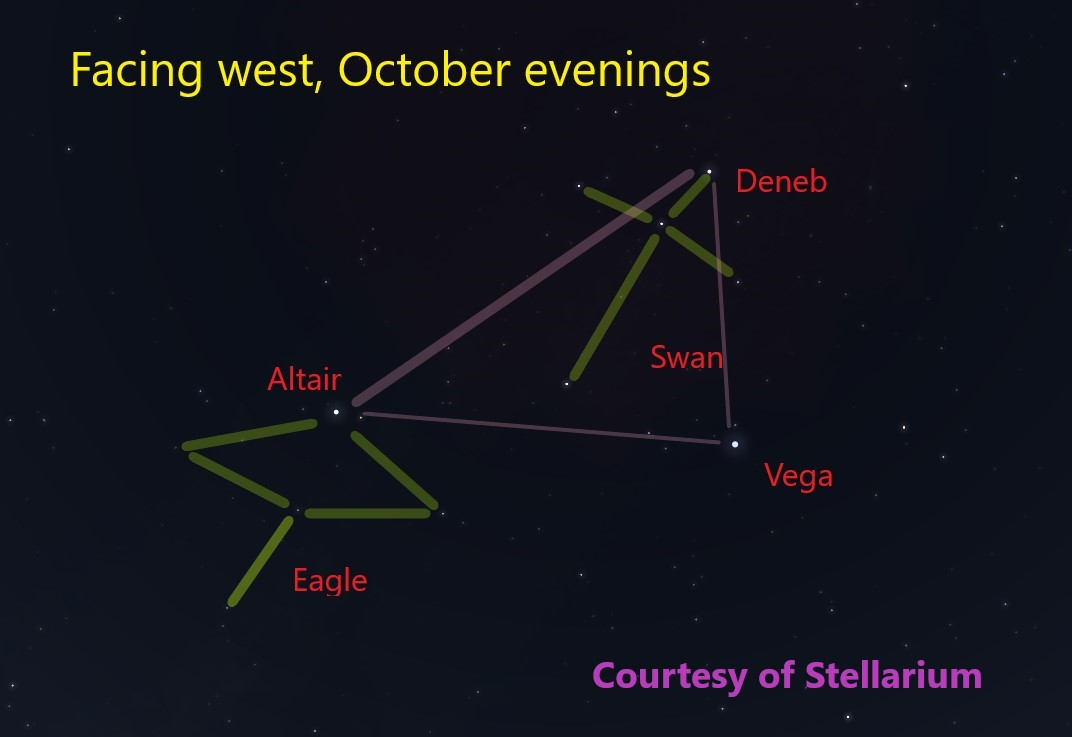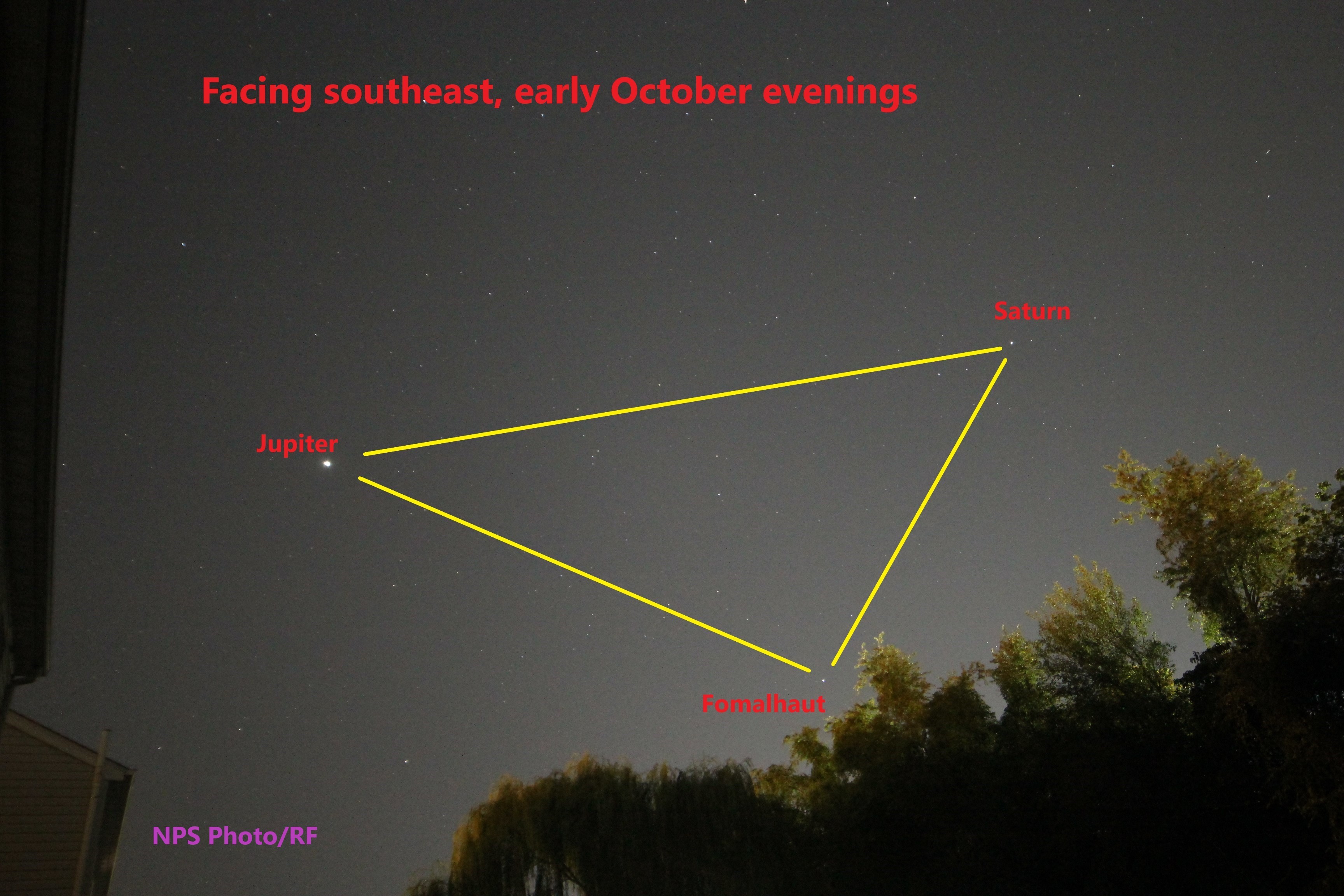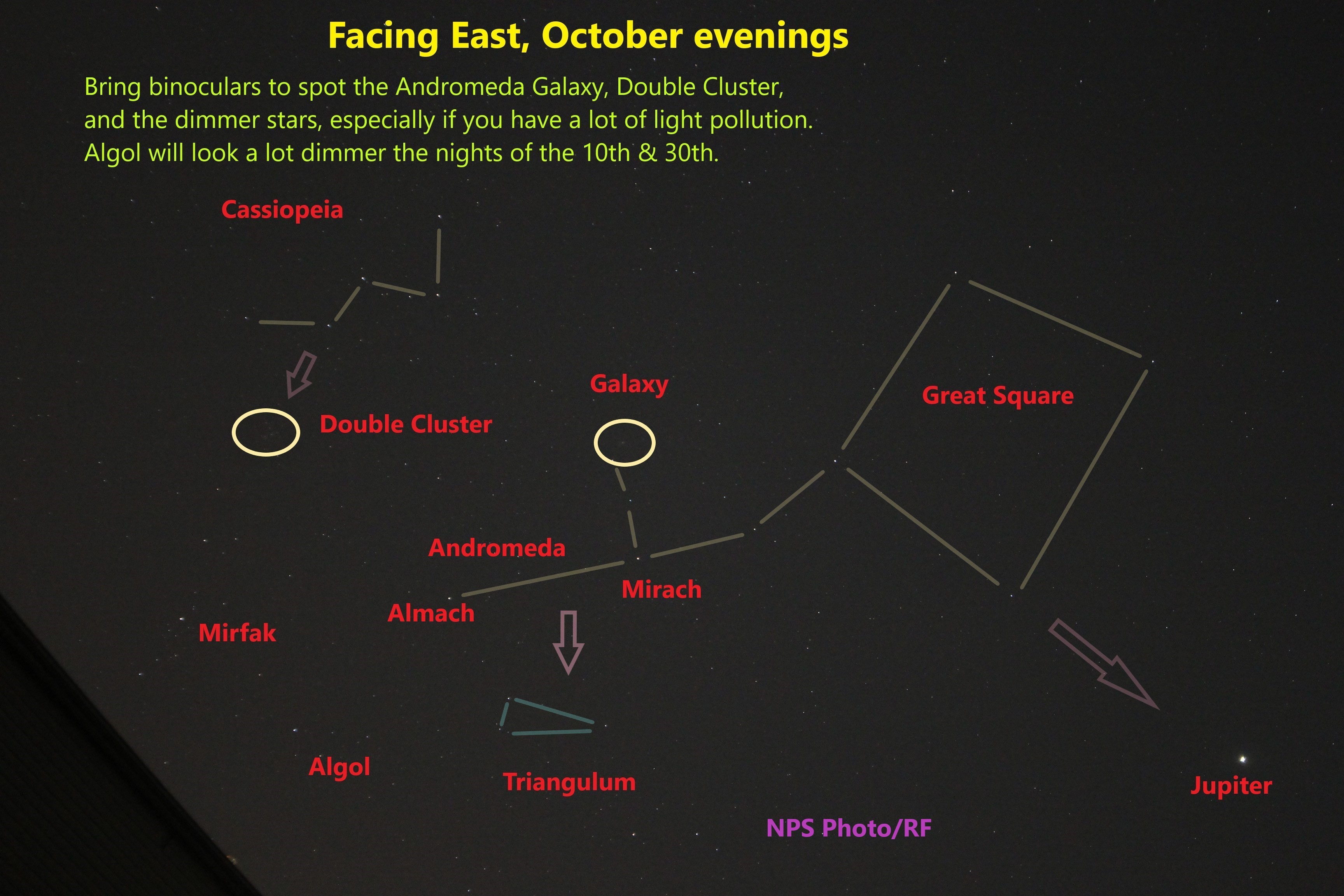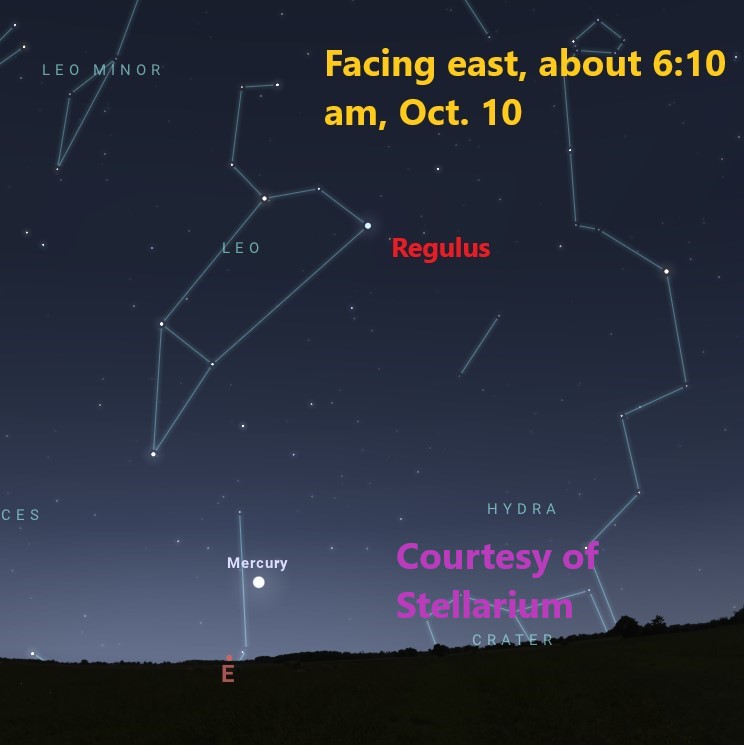A TRIO OF TRIANGLES
My family tells me that as I am getting older, I am having more and more trouble remembering what I did with things. There happens to be a certain giant store near to where I live, and if at all possible, I try to always park in the same row whenever I go there. Stargazers can employ similar means to learn the sky, by trying to group stars and other objects into recognizable shapes. The ancients did this when they created the constellations, but with so much light pollution nowadays, it is often easier to make up your own groupings, or asterisms.
The first of our triangles for this month is easily seen in the western sky after dark. Although a month or two past its highest point, the Summer Triangle is still easily seen on October evenings. Vega, noticeably bluish-white in color, shines brightest of the three stars, with Altair to the left and Deneb dimmest but high up. If the night is very clear, your sky dark enough, or if you bring binoculars along, see if you can trace up the distinctive swan shape marking the constellation Cygnus, below Deneb, and the eagle shape forming Aquila, around Altair.

An even brighter, temporary asterism can be seen in the southeast to southern sky. Jupiter, near its peak possible brightness, blazes away, with dimmer but still conspicuous Saturn seen well to the right. You might remember that Jupiter passed Saturn in the sky in their famous Great Conjunction nearly two years ago, but they are still in the same area of the sky. This is because Jupiter takes nearly 12 and Saturn nearly 30 years to make one orbit around the Sun. The third member of our second triangle is the star Fomalhaut, low in the sky. Fomalhaut is similar to Vega in both distance (25 light years) and temperature, but looks noticeably fainter in the sky, because it is smaller in physical size and dimmed a bit by ground haze near the horizon.

Two triangles are recognized by astronomers as actual constellations. One of these, Triangulum Australe, is never visible from the latitude of St. Louis. It is fun but a bit challenging to find the other, especially if you have a lot of city lights, but it can be done- I can see Triangulum without much trouble from my home, about 16 miles from the Gateway Arch as the crow flies, on a good clear night with little or no moon in the sky. To hunt down Triangulum, start with brilliant Jupiter, and then notice a large square of fairly bright stars to the upper left. This is the Great Square of Pegasus, which looks like a baseball diamond at this time of night and year. You might notice that the line from third base to home plate, or the eastern side of the Square, currently points to Jupiter. Technically, the “third base” star of the diamond belongs to the constellation Andromeda. A ragged line of stars juts out to the left, from third base. Triangulum can be spotted below, as can be seen in the photo.

CHALLENGE OBJECTS
If you have binoculars or quite dark skies, it is possible to find two very different, distant deep-sky objects in this area of the sky. Notice the W-shaped pattern of Cassiopeia above Andromeda, and how the center of the “W” and the star to the lower left point to the Double Cluster, a beautiful object if you have a telescope. If you identify Mirach, the next fairly bright star to the left (north) of “third base,” spot two dimmer stars that I call the ladder, pointing upward- you may need binoculars to see them. If you “climb” the ladder using binoculars, you should be able to make out a dim hazy glow marking the famous Andromeda Galaxy, seen clear across 2 ½ million light years of space! If your sky is clear and dark enough to see the ladder stars without optical aid, you should be able to glimpse the galaxy too- the most distant object that I have ever seen with my unaided eyes.
If you have had fun finding all of these, try one more challenge. Notice the stars Mirfak and Algol to the left and lower left of Almach, the star at the end of Andromeda. Usually all three of these stars appear fairly equal in brightness, but once every 2.8 days, over a period of several hours, Algol fades by about 2/3 in brightness as a fainter star eclipses the brighter. Hint: Try the nights of October 10th or 30th.
As I mentioned earlier, Jupiter and Saturn are easy to see this month, in the early evening sky. Mars is becoming more and more prominent as Earth catches up to it, but it doesn’t' appear in the eastern sky until about 11 pm in early October, but as early as 9 pm by the end of the month. Look for a prominent reddish-orange “star”, low north of east around these times.
The last “challenge” this month is a chance to spot the elusive inner planet Mercury. Best between about October 4-19, Mercury appears low in the east about 6:00-6:15 am St. Louis time. To me, Mercury usually looks like an orange or pinkish colored “star,” and binoculars sometimes help reveal it against the background of dawn. Mercury becomes hard to see after about the 19th, as it appears more and more in line with the Sun. However, on the morning of the 24th, you might just get a last glimpse of it below the very thin crescent moon, about 6:30 am St. Louis time. Bring binoculars.

Join us on the evening of October 8th for the final Gateway to the Stars program of 2022. The Park’s Sky Ranger will present “Ghosts of the Arch Grounds,” a talk about history of the area, focusing upon heroic and tragic events. This program will take place on our West Entrance Plaza at 6:30 pm. Free telescope viewing provided by the Park and volunteers from the St. Louis Astronomical Society will follow, weather permitting, until 8:30 pm. The program will most likely resume next May, but this monthly blog will continue through the winter.
